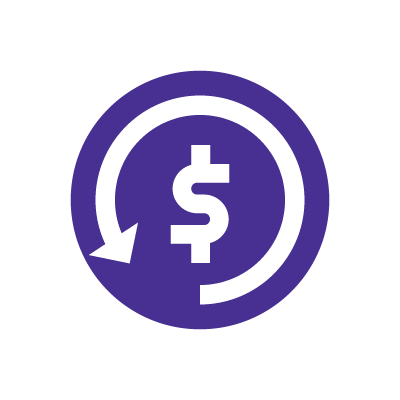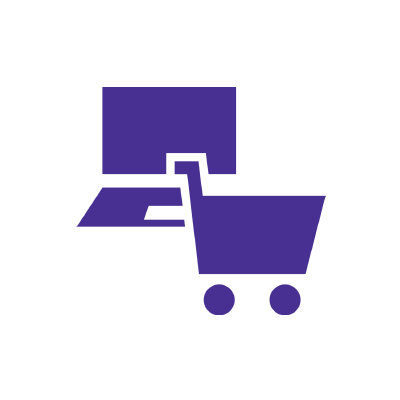What uses data on my cell phone?

The concept of mobile data is familiar to most smartphone users. But how many of us know exactly how much data we’re using, or which apps are consuming it by default?
Keep reading to learn more about what uses data on your cell phone and how you can track it.
What is mobile data usage?
Data usage is the amount of mobile data devices use when connecting to a cellular network, or the internet.
Understanding what mobile data is and how it works will help you pick the best data plan for your needs.
It will also give you more clarity regarding understanding your cell phone bill and tracking your mobile data usage.
What uses data on a cell phone?
It’s easy to use a lot of data when there are so many things to do with a smartphone.
Some common examples of data usage on cell phones include:
- Emailing and texting
- Scrolling and sending DMs on social media
- Web browsing
- Playing games
- Streaming video or audio
- Using mobile apps

Some carriers package voice and text messaging separately from mobile data usage.
You’re still using mobile data when you’re talking on a cell phone and text messaging. However, these activities use less data than streaming video or playing games.
But what uses the most data on a cell phone and what causes high data usage?
Mobile data usage depends a lot on what activities you like to do on your phone and how you do those activities.
It’s safe to assume that you’ll use more data running a mobile application that connects to the internet than just browsing the web.
Also, mobile apps use data when running in the background or when they send notifications to their servers, even if you aren’t using the app, which can quickly deplete your data.
Looking for ways to limit data usage? Text messaging uses less data than messaging via a social media app.
Sharing videos or images, streaming videos, video calling, and playing games also use a lot of data because images require more bandwidth to operate on your device.
Wanna save more on mobile?
Looking for better mobile?
Astound makes switching your mobile plan easy and affordable while keeping you connected to the fast and ultra-reliable internet you deserve.

Why does it matter what my data usage is?
Monitoring your mobile data usage is important because it can significantly impact your bill.
If you go over your limit, you may end up paying overage charges. And if you ignore how much data you use, your bill can increase dramatically.
Mobile carriers measure data use by counting how many gigabytes (GB) or megabytes (MB) of data you’ve downloaded or uploaded from the internet or a cellular network. The more MBs you use, the more money your carrier pays to provide that data.
Carriers have different policies for charging overages and throttling users who use too much data.
Throttling occurs when service providers limit the amount of data you can use. Carriers also define different limits on how much data you can use in a month before they start charging overages.
If your data plan subjects you to overage fees, your bill can become costly.
That’s why it’s important to understand what is data usage on a cell phone and how it will affect your bill.
| Data activity | Data Consumption (GB) |
|---|---|
| Emailing | .2GB = 500 Emails (per day) |
| Web Browsing | 3GB = 10.81 hours |
| Playing Games | 2GB = 2 hours Multiplayer |
| Streaming Music | 1GB = 18 hours |
| Streaming Video SD | 1.5GB = hours |
| Streaming Video HD | 6GB = hours |
| Video Calling SD | 1GB = 3 hours |
| Video Calling HD | 6GB = 3 hours |
|
Data activity
Emailing |
Data Consumption (GB)
.2GB = 500 Emails (per day) |
|
Data activity
Web Browsing |
Data Consumption (GB)
3GB = 10.81 hours |
|
Data activity
Playing Games |
Data Consumption (GB)
2GB = 2 hours Multiplayer |
|
Data activity
Streaming Music |
Data Consumption (GB)
1GB = 18 hours |
|
Data activity
Streaming Video SD |
Data Consumption (GB)
1.5GB = hours |
|
Data activity
Streaming Video HD |
Data Consumption (GB)
6GB = hours |
|
Data activity
Video Calling SD |
Data Consumption (GB)
1GB = 3 hours |
|
Data activity
Video Calling HD |
Data Consumption (GB)
6GB = 3 hours |
*Source: Omni Calculator
Having an idea of your data activity and a general idea about the amount of data consumption associated with various activities can help you decide whether you need to increase your data plan or learn ways to track and limit your data usage.
Learn more about what happens when you go over your data.

Tracking mobile data usage
How do I know how much mobile data I’m using?
When tracking mobile data, you can track your mobile data usage through your mobile carrier or the device itself.
Most mobile carriers allow you to check online or through an app to see how much data is left in your current billing cycle.
Most smartphones have built-in tools that let you check data on the device itself. These tools display how much mobile data is used during the billing cycle. They show how many gigabytes (GB) or megabytes (MB) remain before reaching your plan’s limit.
Check data usage on your device
For example, suppose you’re using an iPhone.
In that case, you can find out how much data you’ve used by going to Settings > Cellular or Settings > Mobile Data to look at the amount of data used.
You can track your data usage on an Android or Samsung by finding the Settings App > Network & internet > SIMs.
Some carriers aggregate data usage from multiple sources, such as social messaging apps and web browsing data, reporting it in chunks.
When tracking your mobile data usage, you may see differences between the data usage presented by your service provider online and the data usage on your device. Therefore, tracking your device’s data may not always be fully aligned with your service providers’ data available in real time.
Find out how you can lower your cell phone bill.
What mobile data plan should I get?
When deciding what mobile data plan you should get, you want to determine how much data you’re using to ensure you’ll get the best plan for your needs.
If you or other family members like to use video calling, stream videos or music, or play games, you fall into the category of heavy data use.
With an unlimited plan, you’ll have less worries about overage fees and tracking data.
You don’t want to pay for services you don’t use.
Therefore a limited data plan might be a better option. But if you don’t have an unlimited plan, monitoring data usage is one way to stay within your limit.
Build your plan
Your perfect plan is just a click away
Get the speeds, WiFi, mobile and TV plans you need all at an affordable price. Bundle your services with Astound and see how much you can save.

Frequently Asked Questions
How do I check my data usage?
You can see your data usage on your Astound Mobile online account or through the Astound Mobile app. Select the “Activity” tab to view your data usage details.
How is data usage collected?
Your Astound Mobile data usage is securely tracked each month and is driven by how often you use your phone to make calls or access the Internet. Your data usage is continually updated, so you know how much you’re using throughout the month.
What happens if I exceed my data limit?
As you monitor your data usage, there may be times in which the amount of data you consume exceeds your current plan’s data threshold. Additional GB of data (Data Top Up) can be purchased directly through AstoundMobile.com or the Astound Mobile app.
For unlimited plans, you may experience reduced data speeds when you exceed the high-speed data threshold in your plan during the billing cycle. To continue using high-speed data through your billing cycle, you have the option to purchase additional GB of data.
Can I switch data options at any time?
Yes, you can upgrade your plan or purchase additional data blocks at any time through AstoundMobile.com or the Astound Mobile app. If you’d like to downgrade your plan or delete a line from your account, please reach out to our Care Team at 1.800.427.8686.
Get Mobile + Internet Together
Find the mobile service, home internet and streaming that’s just right for you.
Astound Mobile requires Astound Internet service. Coverage not available in all areas. A trademark of Ziff Davis, LLC. Used under license. Reprinted with permission. Where available. © 2025 Ziff Davis, LLC. All Rights Reserved. All names, logos, images and service marks are property of their respective owners. ©2025 Radiate Hold Co., LLC d/b/a Astound Broadband. All rights reserved.
This website contains instructional information, including from third-party sources, and is intended, but cannot be guaranteed, to be always up-to-date, complete and accurate. Astound does not endorse, and is not responsible for, any third-party content that may be accessed through this website. Any representation or warranty by Astound that might be otherwise implied by information on this website is expressly disclaimed. Astound expressly disclaims all liability or responsibility with respect to actions taken or not taken based on any or all of the instructional information contained on this website. Astound does not warrant or guarantee the availability of any services at any specific time or geographic location or that services will be provided without interruption. Not all aspects of the Astound services function on all equipment and devices. Use of this website is subject to the Web Site Disclaimer and Web Content Accessibility Policy.

















